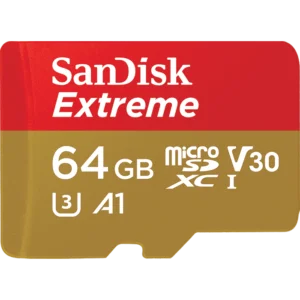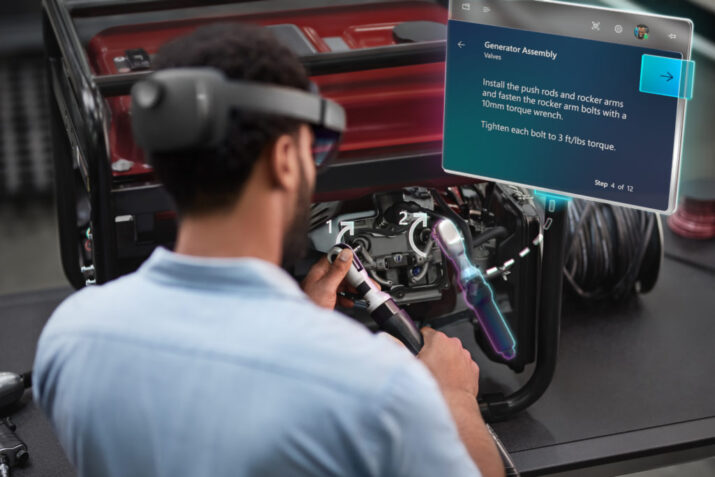
This was a very interesting BUZZ that I found today and wanted to share with you.
Originally posted on: https://vrscout.com/news
After unveiling the device last Sunday at MWC, Microsoft then went on to demo it to a select group of invited media (myself included)That’s where I finally got the chance to play around with what has to be one of the world’s most sophisticated toys, certainly for that price range.
I won’t go over the basic specs here. After a week of over-excited reporting, the device itself – and Microsoft’s strategy for it – have been thoroughly analyzed from just about every angle; from in-depth technical reviews and accounts of testing in Redmond prior to the launch, to the nay-sayers who still insist that the whole thing is doomed to fail. What I’m interested in, however, is what this means for the broader immersive tech ecosystem.
The HoloLens and I go way back. Ever since I demoed the device in London for the first time back in 2016 I was convinced this was going to be something truly transformational.
I went on to report on many different use cases that demonstrated just how much value the mixed reality proposition could bring to all sorts of industries.
While others griped endlessly about the field-of-view and somewhat stilted gestural interface, I always preferred to focus on the bigger picture. The HoloLens was essentially an excellent proof-of-concept, and much of its technology was still amazingly ahead of its time even four years after launching.
I had the opportunity to deep-dive into how the Microsoft team painstakingly developed the awesome spatial audio feature to heighten
So after hearing all about the devices predecessor at the launch in Barcelona, I was keen to see it with my own eyes. Would it actually deliver on the promises Kipman had made on-stage the night before?
When I first put the headset on, we were off to a good start. Promise number was kept right off the bat: the HoloLens 2 is vastly more comfortable than its original counterpart.
I’m not sure if it was exactly “three times more comfortable” like Kipman claimed but it was definitely comfortable! Whereas I usually came away from HoloLens demos with big red marks on the bridge of my nose, the weight of this new device was elegantly distributed; this time the center of gravity is located much further towards the back of the device.
This, combined with a lighter carbon fiber construction, results in a far more natural experience which can be enjoyed for longer periods of time without discomfort.
The second promise Kipman made was that this new rendition of the HoloLens provided a much more immersive experience. Microsoft reports that the field-of-view (FOV) is twice the size of the old HoloLens, although some have since challenged those claims.
I have always maintained that even with the restricted FOV of the original, your brain adjusted to the experience pretty quickly. However, the extended FOV of the HoloLens 2 did make it easier to adjust, allowing me to immerse myself into the demos at a rapid pace.
The FOV on the HoloLens 2 doesn’t quite cover your entire line-of-sight, but it does fill enough of your peripheral vision to the point that it doesn’t interfere with the experience.
I spoke to Mark Christian, Global Director of Immersive Learning at Pearson – one of Microsoft’s HoloLens Partners – who told me that after delivering over 200 demos on the first day at MWC (conference attendees were waiting over 3 hours in line for the chance to try the device) not one person mentioned feeling limited by the FOV.
So now that we got that out-of-the-way, lets dive in to what excited me most during my own demos. Surprisingly enough, I found myself enjoying the device the most during the first couple of minutes of each experience, where you’re essentially calibrating the device.
By my third of fourth calibration attempt I knew exactly what to expect, but it was still magic none-the-less; and to me it really sums up why this is an awesome leap forward for Microsoft and for mixed reality technology as a whole. The process shines especially bright when it comes to eye-tracking and voice recognition.
The first calibration exercise (after you do the familiar lining up of a holographic box onto the middle of your display so you can see all four edges) has a series of bright spinning jewels pop up in different places in your field of view.
I’m instructed to just look at them, without moving my head. As my eyes rest briefly on each jewel, the digital model disappears in-turn; the HoloLens 2 knows exactly where you’re looking. After that’s done, a colorful hummingbird materializes in front of me.
The device then scans my hands — automatically adjusting to their shape and size. When I move them the tiny bird reacts by flying over to hover above them. I change hands and move them around, feeling like Snow White in a Disney film as my new digital friend — who I really felt like naming — follows my every move. Once the calibration process was completed, I tearfully watched my feathered companion disappear.
Of
Thanks to the devices eye-tracking technology, you can even activate certain actions just by gazing in a specific direction. Even simple acts such as reading benefited greatly from this capability.
In one of the demos I participated in text information was displayed on the screen of my HoloLens 2, and as my eyes finished reading the last line, the text automatically scrolled up.
Not only that, but it did so faster or more slowly depending on my reading speed, similar to production member manually operating a teleprompter. It was absolutely seamless, and a prefect example of a theory Microsoft CEO Satya Nadella referred to in his speech on Sunday at MWC: the best technology eventually becomes invisible.

What is 360 VR Video?
360 video is a video that is recorded in all directions at the same time with multiple cameras. The videos are stitched together either internally in the camera or externally using special software.
It then forms one spherical video that is controlled by the viewer, enabling them to look up, down, right or left at their discretion.
Is 360 Video Virtual Reality?
I want you to be the judge.

Recommended MicroSD Card for use with the Fusion 360 camera
How are you watching your 360 VR Video?
Are you watching on your PC?
Is it Facebook? YouTube? Veer.TV ?
Or better still, are you using your Samsung Galaxy Smartphone with your Samsung Gear VR Headset?


Or are you using another smartphone with a Google Cardboard? Google Daydream?
Leave a comment below. Let us know what you like or don’t like. If you have seen a 360 VR video that you think is awesome, tell us, and we will feature it.
What type of VR Headset do you own? Or do you watch with your computer? Smartphone?

Do you have a VR camera? Ricoh Theta S? Ion360? Samsung 360 gear? Insta360?
And if you are looking for 360 Video Production Services, contact Al Caudullo exploretv@gmail.com
With 37 years of Media experience, we can Deliver More for You in 360 Video. Click here to see what our customers say about our work
Utilizing state of the art technology, Al Caudullo, and his team has been delivering award-winning compelling productions spanning the globe. Exotic destinations blended with unique cultural experiences give viewers an experience like no other.
From vibrant American cities like San Francisco and Las Vegas to the isolated mountains of Mongolia. From ancient civilizations of Cambodia and Myanmar to the lush resorts of Southeast Asia and beyond. All from the comfort of your living room.



